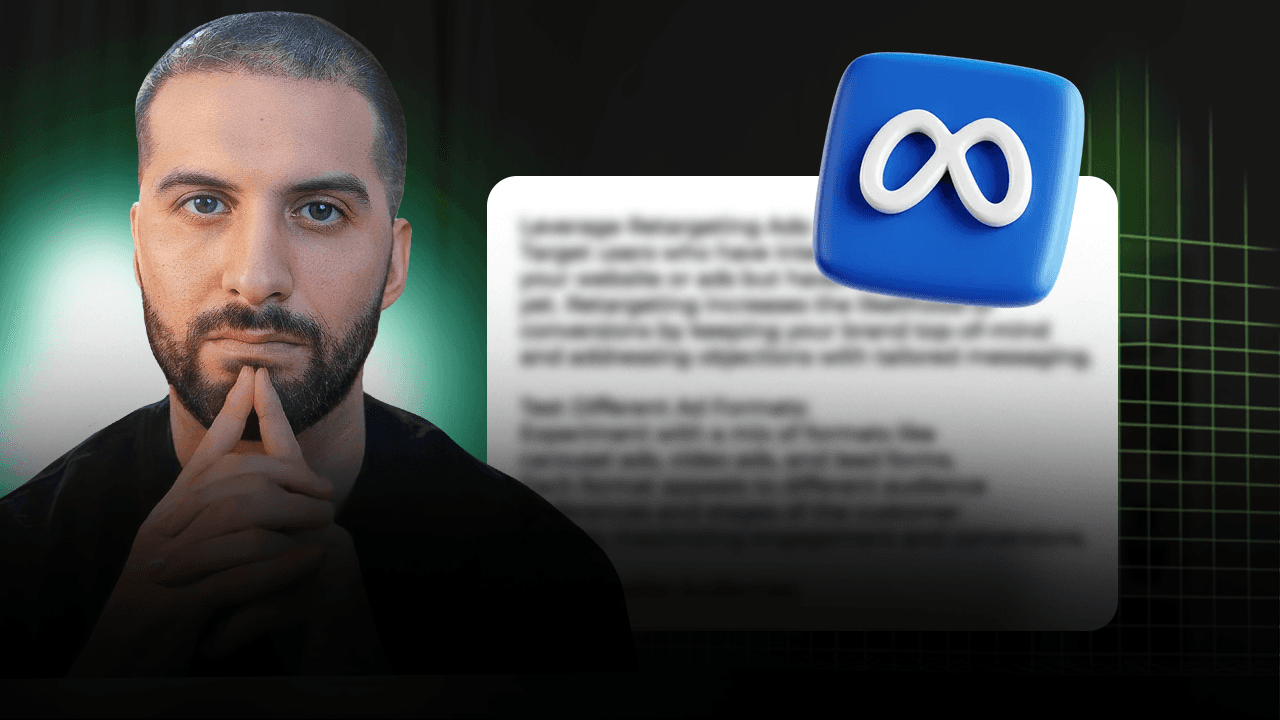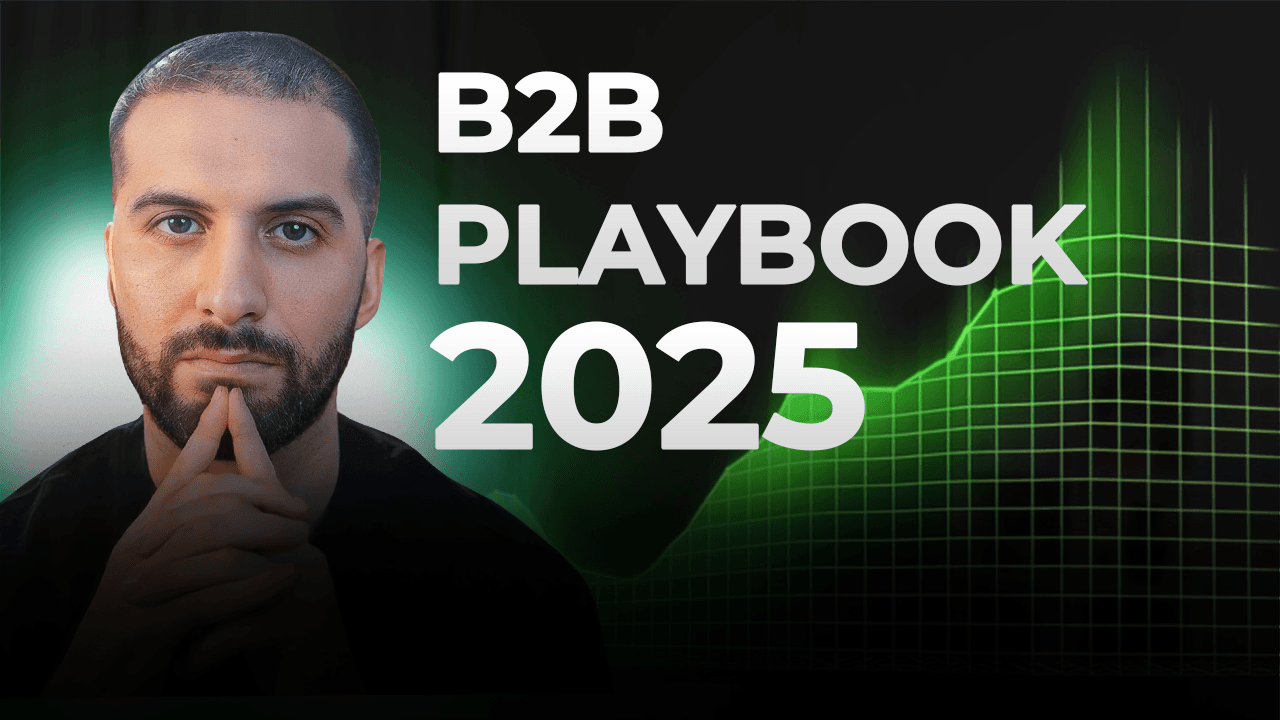1. Using Traffic Campaigns Instead of Conversion Campaigns
Many advertisers mistakenly run traffic campaigns, thinking that driving more visitors to their website will automatically lead to more conversions. However, traffic campaigns optimize for clicks, not actions like sign-ups or purchases. Meta will target users who are likely to click but may not take meaningful actions.
Fix: Choose a conversion campaign and set the objective to actions aligned with your business goals, like generating leads or making sales. Although cost-per-click might rise, the cost-per-conversion will often decrease.
2. Setting the Wrong Conversion Objective
Even within conversion campaigns, setting the wrong goal can derail performance. For example, choosing “Website Visitors” as your objective reverts your campaign to a traffic campaign, targeting users who visit but don’t necessarily convert.
Fix: Clearly define what you want from your audience – form submissions, purchases, or another action – and set that as your conversion goal.
3. Not Enabling All Placements
Some advertisers restrict their ads to specific placements, such as only Instagram Stories or Facebook Feeds, believing they know where their audience spends the most time. This limits Meta’s ability to optimize effectively.
Fix: Allow Meta to use automatic placements. Meta’s algorithm is highly advanced and will allocate budget to the most effective placements, whether it’s Instagram Stories, Facebook Messenger, or even the Audience Network.
4. Spreading Budget Across Too Many Campaigns
Dividing your budget across too many campaigns reduces the data available for Meta to optimize each one effectively. For example, splitting a $100 daily budget across 10 campaigns gives each only $10, which isn’t enough for meaningful learning.
Fix: Focus your budget on one or two campaigns to gather sufficient data quickly. This approach allows Meta to identify what works and improve performance faster.
5. Running Too Many Split Tests
It’s tempting to test multiple headlines, visuals, and landing pages simultaneously to see what works best. However, if your budget is small, running too many tests simultaneously spreads your resources thin and produces inconclusive results.
Fix: Start with a few key variables to test, such as two headlines or two ad creatives. Scale your budget and expand testing only after you’ve gathered enough data.
6. Targeting Audiences That Are Too Small
Overly narrow audiences make it difficult for Meta to optimize effectively. For instance, targeting fitness studio owners with multiple layered interests may shrink your audience to only a few thousand people. This results in higher CPMs and limits Meta’s learning ability.
Fix: Aim for audience sizes between 300,000 and 900,000 people. Larger audiences allow Meta to identify the best users and adjust your campaign accordingly.
7. Poor Headlines
Your headline is one of the first things users see and is crucial in grabbing attention. Headlines like “Book Your Free Consultation Now” or generic phrases like “The Perfect Solution for Your Business” often fail to engage.
Fix: Use headlines that are specific, attention-grabbing, and relevant to your audience’s needs. For example: “With this highly accurate ad tracking tool, LeadGen companies reduce their advertising costs by 65% on average and get 5x more qualified leads."
8. Weak Landing Pages
Even the best ad won’t convert if your landing page fails to deliver. Pages that load slowly, lack clear calls-to-action, or feel cluttered will cause users to leave.
Fix: Ensure your landing page is fast, user-friendly, and optimized for conversions. Focus on clarity and emphasize the value of your offer.
9. Constantly Tweaking Campaigns (Day-Trading)
Some advertisers monitor their campaigns obsessively, making daily changes based on short-term fluctuations. This interrupts Meta’s learning process and leads to inconsistent results.
Fix: Avoid frequent adjustments. Let campaigns run for at least 5–7 days before making changes, allowing Meta to gather enough data to optimize effectively.
10. Not Setting Up Proper Tracking
Without tracking, you can’t accurately measure your campaign’s success. Many advertisers fail to install the Meta Pixel or rely solely on it, overlooking additional tools like the Conversion API.
Fix: Install the Meta Pixel and set up the Conversion API to ensure accurate tracking, even when users block cookies or use privacy-focused devices.
11. No Retargeting Campaigns
Most people don’t convert the first time they see an ad. Retargeting allows you to re-engage users who visited your website or interacted with your ad but didn’t take the next step.
Fix: Use retargeting to create multiple touchpoints with your audience. For example, show ads with testimonials or educational content to warm up leads.
12. Campaign Cannibalization
Running multiple campaigns targeting the same audience can create competition between your ads. Meta claims this doesn’t impact performance, but overlapping audiences can increase costs and reduce effectiveness in practice.
Fix: Consolidate similar audiences and allocate your budget strategically to avoid overlap. Test different audience segments rather than duplicating efforts.
13. Payment Issues
Something as simple as a declined payment can cause your entire ad account to be suspended. Once blocked, recovering your account can be challenging.
Fix: Use credit cards with high spending limits and consider adding a backup payment method. Monitor your account to avoid interruptions.
Bonus Mistake: Skipping Ad Tracking – The Costliest Oversight in Advertising
One of the most expensive mistakes you can make in your ad campaigns is neglecting proper tracking. Without a robust tracking setup, you’re essentially flying blind, making decisions based on incomplete or inaccurate data. Here’s why this oversight could be draining your budget and limiting your ROI.
Why Ad Tracking Matters:
Identify What Works (and What Doesn’t):
Without tracking, you can’t pinpoint which ads, audiences, or channels are driving conversions. This means you’re likely spending money on ineffective campaigns without realizing it.Optimize Your Budget:
Tracking allows you to allocate your budget to the campaigns and audiences that yield the highest ROI. Without it, you risk wasting up to 30% of your ad spend on low-performing efforts.Understand Your Customer Journey:
Modern consumers interact with multiple touchpoints before converting. Without tracking, you lose visibility into these interactions, making it impossible to optimize your funnel or retarget effectively.Stay Competitive:
Businesses that track their ads can make data-driven decisions, outpacing competitors who rely on guesswork. Falling behind in this area could mean losing market share.
The True Cost of Ignoring Tracking:
Wasted Budget: Misallocated funds on underperforming campaigns can quickly add up, making your ad spend inefficient.
Missed Revenue Opportunities: Without precise data, you can’t identify high-value audiences or refine your strategy to maximize conversions.
Inefficient Scaling: Scaling campaigns without insights can lead to higher costs and diminishing returns, eating into profits.
Conclusion
Meta ads can deliver exceptional results – but only if campaigns are set up correctly. By avoiding these 13 common mistakes and implementing the suggested fixes, you can unlock the full potential of Meta’s advertising platform. If you're interested in optimizing your ads, spending up to 50% less of your ad budget while increasing lead quality by 3-4x, reach out: Click here to book your free consultation now!

Jousef Murad
Founder of APEX




